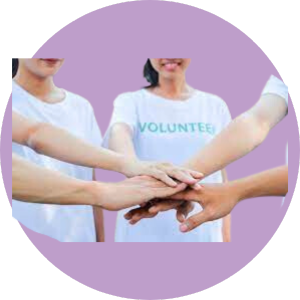In the last 60 seconds, approximately 20 people were physically abused by an intimate partner¹. It’s important we take the time to acknowledge the millions of people each year who are victims of intimate partner violence (IPV). This type of violence does not discriminate based on age, ethnicity, economic status, gender, country, or any other reason. Anyone can be a victim, and anyone can be an abuser. To honor those who are affected by IPV, take the time to educate yourself on the truth about domestic violence.
General Facts About Domestic Violence
- IPV affects over 12 million people each year².
- Almost all people in the US have experienced psychological aggression by an intimate partner at some point in their life².
- From 1994 to 2010, 4 out of 5 victims of IPV were women².
- IPV makes up about 15% of violent crimes¹.
- About 70% of murder-suicides involve an intimate partner².
- On average, 20,000 calls are made to domestic violence hotlines in the US².
- Over 3 women per day are killed by their husband/boyfriend each day⁹.
- Risk factors for IPV victimization include being poor, less educated, young adult/teenager, female, living in an impoverished neighborhood, and alcohol or drug dependency⁹.
- Risk factors for perpetrating abusive behaviors are low income and/or academic achievement, young age, prior history of abuse either as a perpetrator, victim, or bystander, a desire for power/control, alcohol/drug use⁹.
Domestic Violence by Gender, Sexual Orientation, and Age
- More than 1 in 3 women and 1 in 4 men have been victims of some kind of PVV in their lifetime in the US².
- About 15% of women and 4% of men have been injured as a result of IPV in the US².
- Women between the ages of 18-24 and 25-34 have the highest rate of IPV victimization².
- Almost 10% of high schoolers report being intentionally, physically hurt by their intimate partner³.
- 15-40% of youth report being the perpetrators of some kind of physical violence towards their intimate partner³.
- Over 40% of lesbians and 60% of bisexual women have been victims of IPV during thier lifetime⁴.
- 26 percent of gay men and about 40 percent of bisexual men have been victims of IPV in their lifetime⁴.
Global IPV Statistics
- About 87,000 women worldwide were intentionally killed in 2017–about a third of them were killed by their intimate partner⁵.
- Globally, 35-70% of women have experienced IPV throughout their lifetimes⁵.
- Countries with unequal gender norms tend to have higher rates of IPV⁶.
- In Sudan, 34% of women believe a husband is justified in hitting their wife⁷.
- Marital rape is legal in 10 countries⁸.
- IPV affects job stability, making it more likely for a victim to lose their job⁸.
IPV by Socioeconomic Status
- Low level of education is a risk factor of both IPV perpetration and victimization⁶.
- 17% of cities attribute DV as the most significant cause of homelessness⁹.
- IPV affects job stability, making it more likely for a victim to lose their job⁹.
- Low socioeconomic status is often considered a risk factor for IPV/DV, but any ¹⁰.
IPV Policies
- 144 countries have passed laws on domestic violence⁵.
- Data on IPV for the years 2005-2017 is available in 106 countries⁵.
- Evidence shows that advocacy, counseling on empowerment, and home visits are effective in reducing/preventing IPV⁶.
October is a month for raising awareness and education about domestic violence. However, it is clear to see that this is a public health issue. We should push domestic violence into the “limelight” every day of every month–not just one. Policies of prevention and response should always be at the forefront of conversation. This is especially true in conversations between law enforcement, public health and government officials, and anyone else affected by this type of violence. If you or someone you know is a victim of DV, the National Domestic Violence Hotline is available 24/7 at 1-800-799-7233 for support.
Here is a list of resources for further statistics or help for victims of IPV/DV that is provided by the American Psychology Association:
Provides resources for deaf/blind victims of DV, sexual assault and stalking.
Assists in finding psychologists in your local area.
- National Coalition Against Domestic Violence
Educates the public on domestic violence– how to recognize it, prevent it, and respond to it. Provides resources and education about all types of DV and their impacts. - VAWnet: The National Online Resrouces Center on Violence Against Women
A collection of resources and information on domestic violence, sexual assault, and other related topics.
Works to promote women of color advocates.
SIGN THE BTSADV PETITION
References:
¹https://ncadv.org/STATISTICS.
²https://www.thehotline.org/stakeholders/domestic-violence-statistics/
³https://www.cdc.gov/violenceprevention/pdf/datingmatters_flyer_2012-a.pdf
⁴https://ncadv.org/blog/posts/domestic-violence-and-the-lgbtq-community
⁶https://www.who.int/news-room/fact-sheets/detail/violence-against-women
⁷https://data.unicef.org/resources/fgm-country-profiles/








